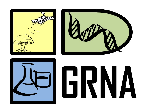Banca de DEFESA: GABRIELA CACILDA GODINHO DOS REIS
Uma banca de DEFESA de MESTRADO foi cadastrada pelo programa.DISCENTE : GABRIELA CACILDA GODINHO DOS REIS
DATA : 20/02/2020
HORA: 10:00
LOCAL: Sala 107 - Campus Amazônia
TÍTULO:
...
PALAVRAS-CHAVES:
Environmental Monitoring, Solar Ultraviolet Radiation, Temporal Variability, Amazonia.
PÁGINAS: 48
GRANDE ÁREA: Outra
ÁREA: Ciências Ambientais
RESUMO:
The effects of solar ultraviolet radiation (UVR) on ecosystems, including humans, depend on the levels of exposure and the incident intensity. This, in turn, is determined by several factors, including those that are affected by land use change, such as deforestation, agricultural transformations, urban and industrial development. It is important to note that climate change, influenced by anthropogenic actions, can result in increases or decreases in the incident UVR, depending on the location, time of year and other circumstances. Therefore, monitoring at the local level is necessary, in addition in the Amazon region, in this case, in Santarém, Pará, which is the polarizing center of the Lower Amazon, with a high number of people attending, exposed to unknown amounts of UVR, due to lack of studies in this area. In this work, continuous monitoring of the UVR on the city of Santarém was carried out, in order to demonstrate, through the time series obtained, the variation of the UVR in different time scales (daily, monthly, seasonal). A period of 9 months of data (April to December of 2019), in the wavelength range of 250-400 nm was measured and analyzed statistically. It was observed that in the rainy season (December to June) the highest maximum UVRs were identified. The month of April, among the studied months, presented the highest value for this radiation, reaching a maximum of 110 W⁄m², at 11 am. September and August had the lowest maximum, respectively 77,90 W⁄m² e 75,10 W⁄m². However, even though maximum values were higher in the rainy period than in the dry period, the months of the dry period (July to November) had the highest averages, with September being the month with the highest average 33,39 W⁄m² and with 75% of incident UVR reaching up to 58,12 W⁄m². It is assumed that the maximum recorded in the rainy season may occur due to the morphology of the clouds present in this period of the year, which tend to cause an increase in the radiation flow that reaches the surface. As for the higher average and third quartile in the dry period, it is also assumed that they can be explained by the cloud cover, which is less present at this time, allowing UVR to reach the surface with less interference.
MEMBROS DA BANCA:
Interno - 2034627 - JULIO TOTA DA SILVA
Externo ao Programa - 2375222 - LUCAS VAZ PERES
Externo ao Programa - 2160992 - RAPHAEL PABLO TAPAJOS SILVA
Presidente - 1549120 - RODRIGO DA SILVA




